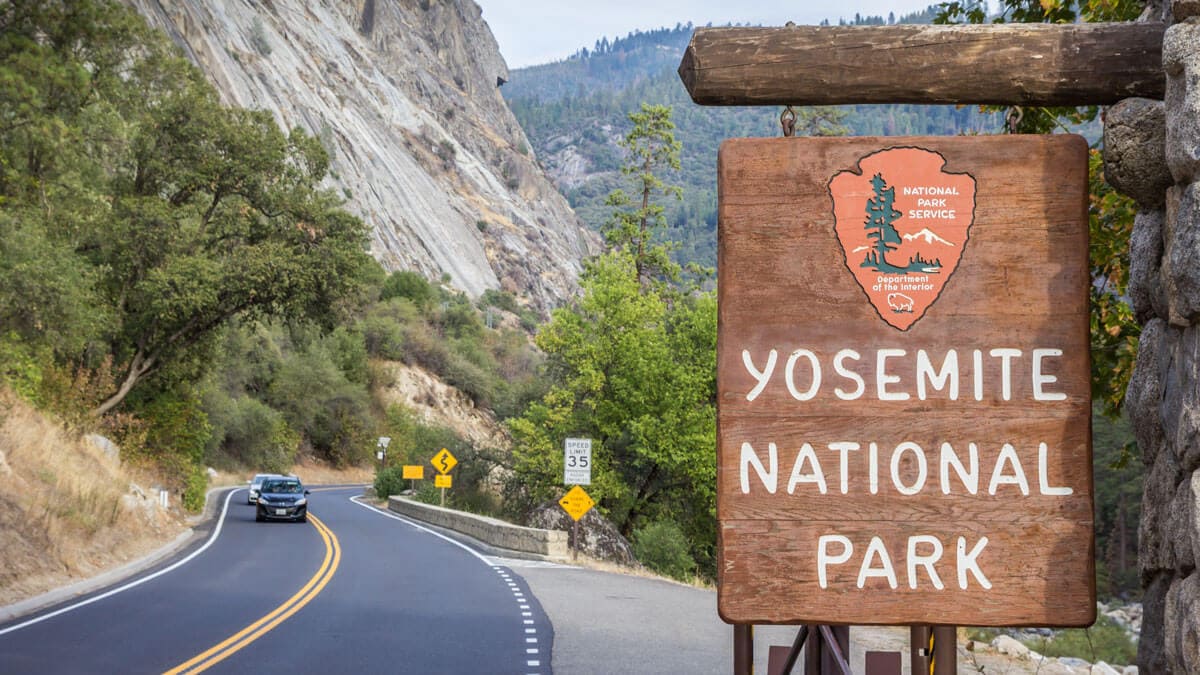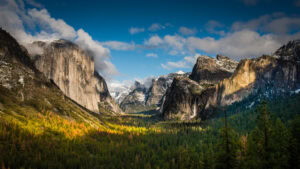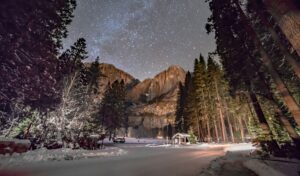Everyone remembers their first time. The season, time of day, who you were with, and the pictures that were taken to preserve the memory. Wait, pictures? Yes, when you’re talking about the first time you lay eyes on Yosemite Valley, it’s a forever moment that deserves to be framed!
Yosemite National Park offers 1,200 square miles of breathtaking natural terrain. For a word that is oft-overused, epic is in play here. If you’ve never been to Yosemite, words may not even be enough to prepare you for what is coming. But we’ll do our best. Here’s what you need to know.
Why Yosemite?
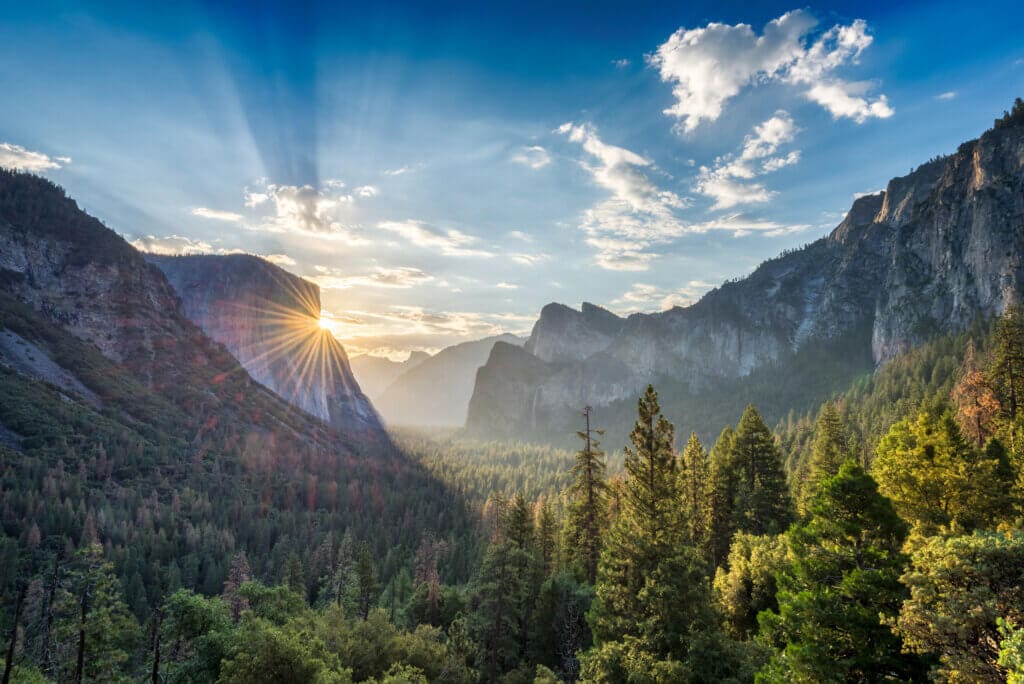
Perhaps no other National Park is so instantly recognizable as Yosemite. Ever since John Muir eloquently chronicled his explorations starting in the 1800s, and later when Ansel Adams trained his immortal lens on its waterfalls and granite monoliths, Yosemite National Park had occupied a treasured place in America’s imagination. The sheer scale and level of natural grandeur are “you have to see to believe” level. Pair that with how easy it is to get here – about three hours from the San Francisco Bay Area, just a little longer from greater Los Angeles – and there’s your short answer to why Yosemite.
When to Visit Yosemite
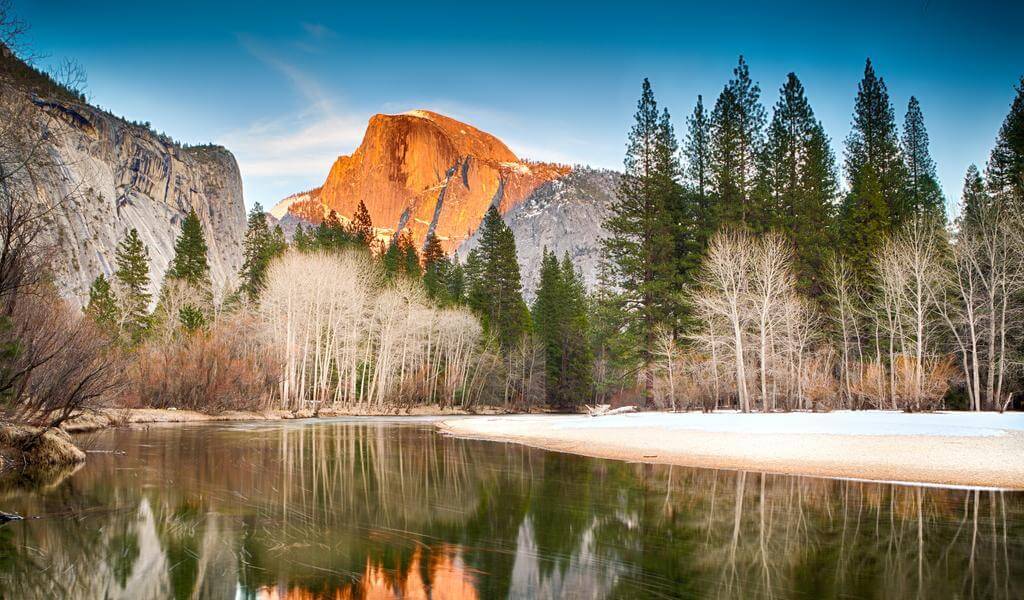
Yosemite is a four-season destination, with magic sprinkled over each quarter – yet most visitors choose to visit in the summer. School is out, international travelers are taking their extended California tour, we get it. But if you’re able to consider a different window, visit the Park anytime but the summer, and especially for your first experience. Spring is when the waterfalls are at their peak. Autumn is splendid, with cooler days and inspiring hues. Winter brings board sports and turns Yosemite Valley into a giant snow globe. Winter’s turn to spring offers its own set of wonders, a weather hybrid of sun and storm. Adding to seasonality, timing your arrival is everything. Early mornings and midweek visits will help to optimize your experience.
Yosemite Valley Views
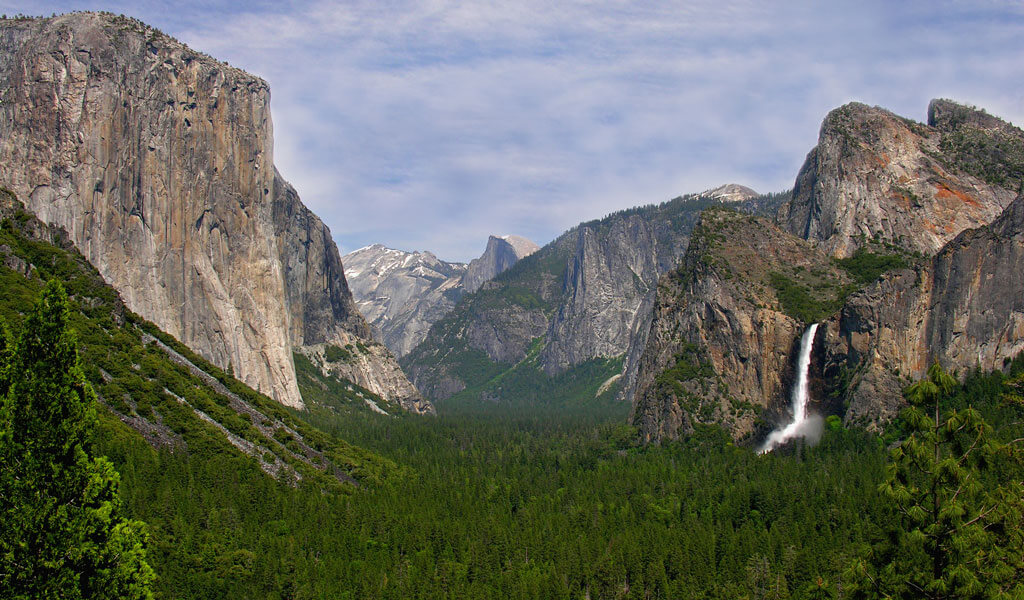
Nothing quite prepares you for Tunnel View’s grand reveal, as Yosemite Valley opens up with awesome scale and dimension before your very eyes. Prepare to be awestruck! From Tunnel View, Yosemite Valley’s most familiar faces, peaks and waterfalls offer a panoramic-mode-worthy symphony: El Capitan, Half Dome, and Bridalveil Fall say hello.
Discover the Beauty that Surrounds!
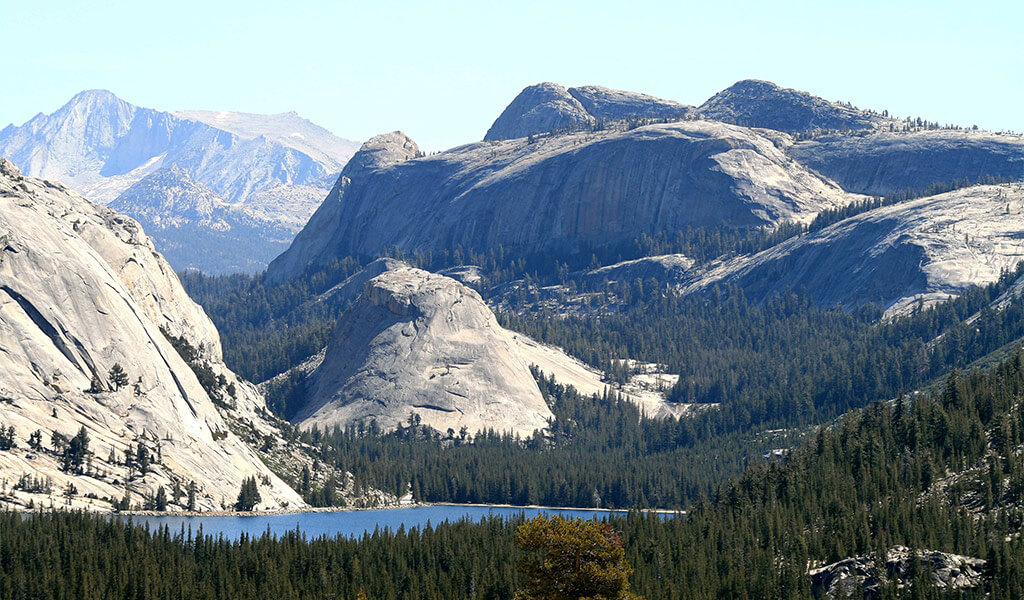
Yosemite Valley packs a punch but, it represents less than 1% of the Park’s total area! Yosemite National Park is studded with iconic scenery. All along Tioga Road, Northern Yosemite offers its own jaw-dropping vistas including Olmsted Point, Tenaya Lake and Tuolumne Meadows. The austere alpine scenes along this stretch of seasonal highway are well worth the drive. Hetch Hetchy may be the unsung hero of Northern Yosemite with Wapama Fall and relatively undiscovered hiking trails. Southern Yosemite offers another set of historic and natural attractions including the friendly enclave of Wawona and the Mariposa Grove of Giant Sequoias. Above it all, Glacier Point delivers a soaring perspective over the Valley floor. As most visitors never venture past Yosemite Valley, the rest of the Park is wide open for your adventure.
Take a Hike
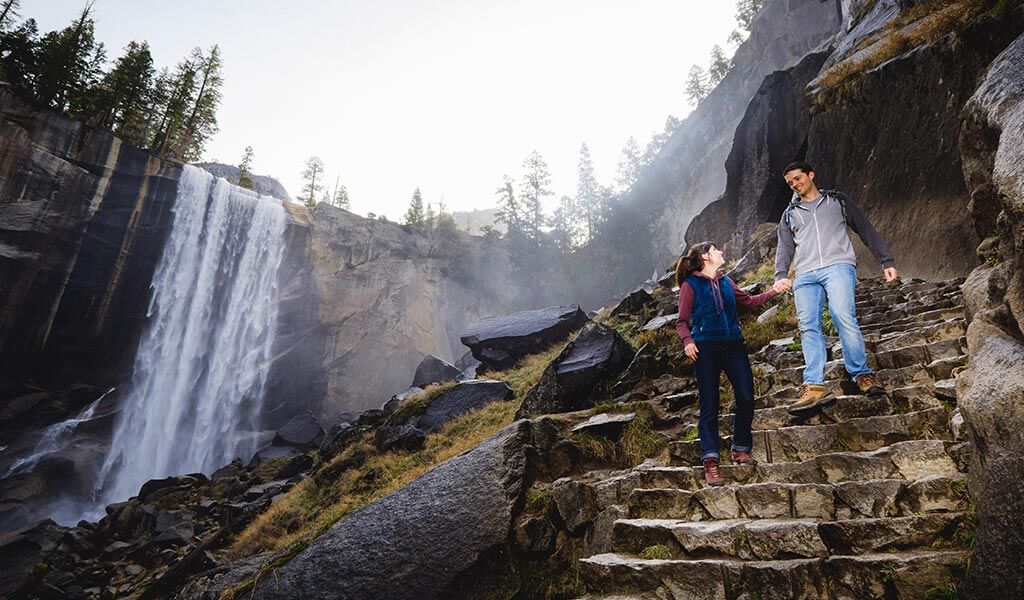
Walking or hiking up to a waterfall is perhaps Yosemite’s signature experience. Start with Bridalveil Fall or the short but sweet hike out to Lower Yosemite Fall. More difficult but within reach of most able walkers via the Mist Trail are Vernal and Nevada falls. And for the win, the 7.5-mile round trip to Upper Yosemite Falls is everything. The switchbacked trail climbs nearly 2,500 vertical feet up the waterfall’s coursing path with views all along the way. Feeling ambitious? Score a wilderness permit and take an overnight hike into Yosemite’s interior. Clouds Rest is a great example of a hike that, while many do in one day, is even better when you camp and catch the sunrise.
Driving To, In and Around Yosemite
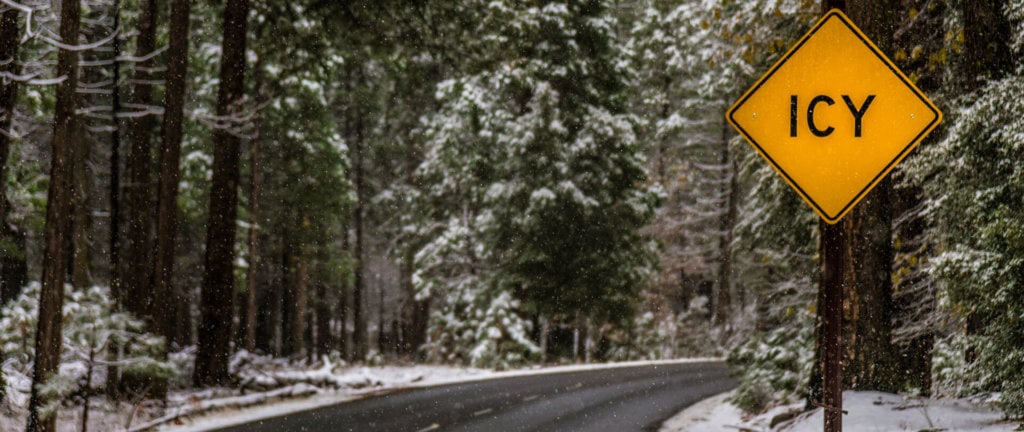
Located in Mariposa County, Yosemite is tucked into the Sierra Nevada Mountains, an easy half-day drive from the San Francisco Bay Area and greater Los Angeles. A trio of scenic highways take you there: 41 from the south, and 120 and 140 from the northeast. All three are generally open and passable year-round. The higher elevation highways 41 and 120 are more likely to have snow (and chain controls) during winter storms. Highway 140, dubbed the All-Weather Highway, enters Yosemite Valley at a lower elevation and is usually snow-free. Certain roads inside Yosemite National Park are subject to seasonal winter closure. No need to reinvent the wheel: discover current conditions and additional driving resources with our guide to Yosemite Road Conditions.
Car Free, Carefree!
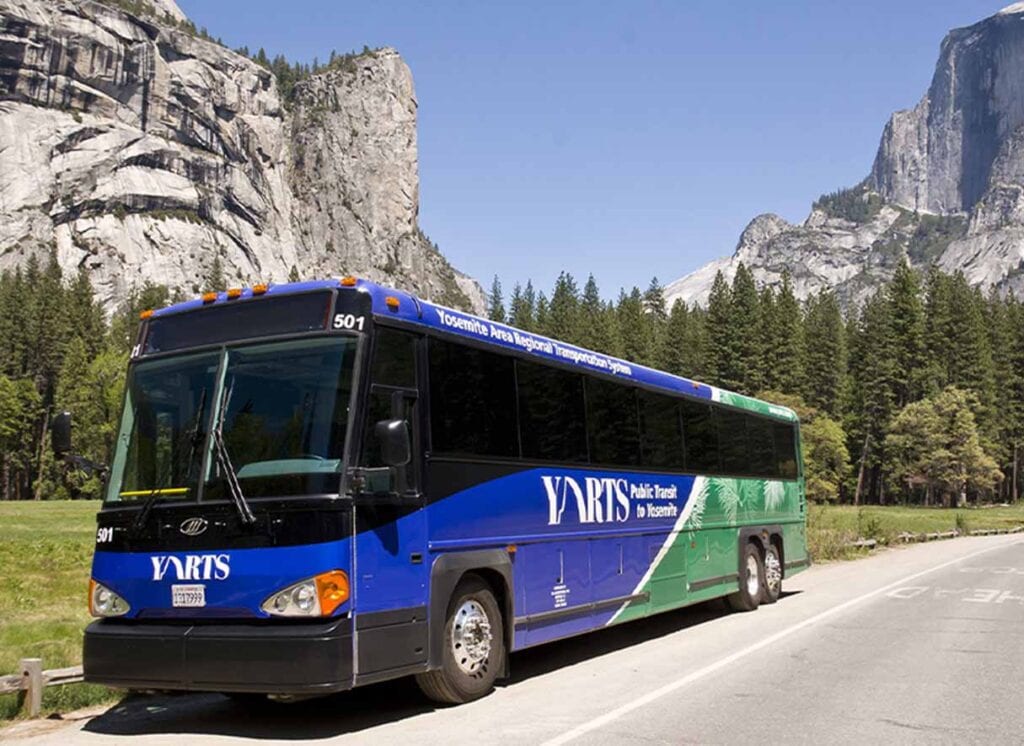
Take advantage of the surprisingly deep line-up of Yosemite public transportation options: YARTS; the free Valley Shuttle; Tuolumne Meadows Shuttle; Glacier Point Shuttle; and Mariposa Grove Shuttle. Two-wheelers can take advantage of Yosemite Valley’s free bike share. For more information about Yosemite public transportation, call (877) 989-2787, or visit http://yarts.com/.
What to Pack
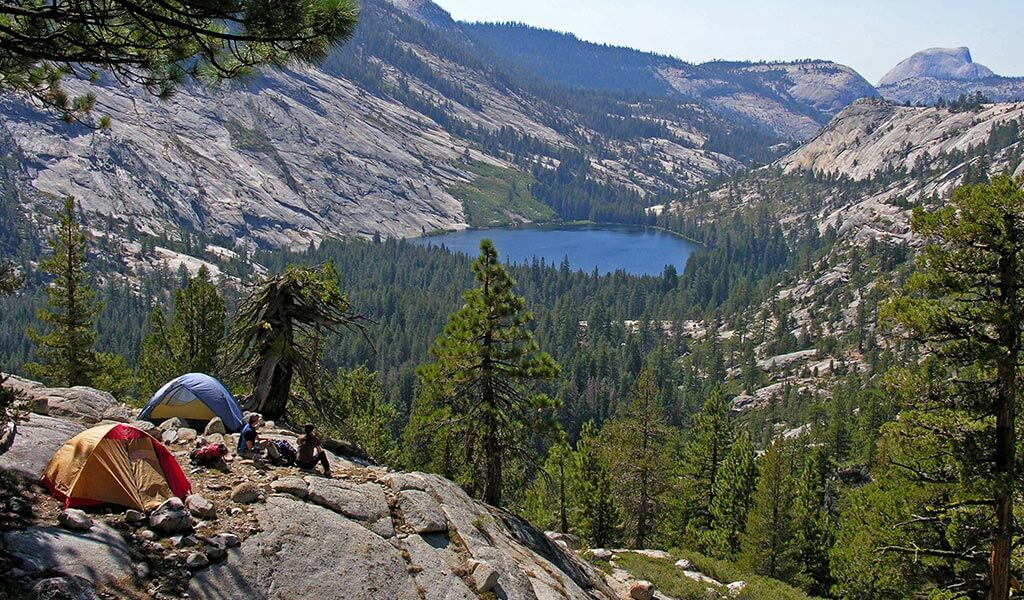
With an elevation swing from about 1,000 to more than 13,000 feet, and with four distinct seasons of Sierra Nevada weather, your packing list will naturally vary by time of year and where in the Park you’re visiting. The one constant: multiple layers including a quick-drying base layer and waterproof shell. From there, tailor your packing list to the specific season – puffy parka to swimsuit – and you will wear it well.
Where to Eat & Drink
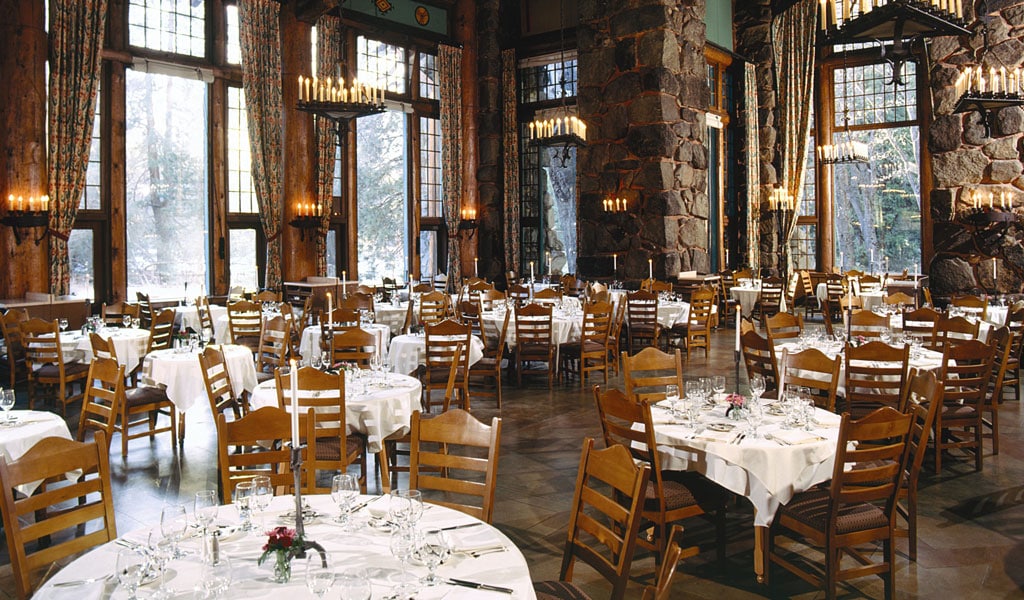
Yosemite’s dining game is strong. Inside the Park, options focus on Yosemite Valley with restaurants ranging from picnic table to white tablecloth. Gateway communities like Coulterville, Midpines and Mariposa offer foodie options for those on the way in and out of the Park, perfect for visitors staying in these charming Gold Country towns. And be sure to bring plenty of water with you, more than you think you will need; the added elevation and activities demand it!
Yosemite on a Budget
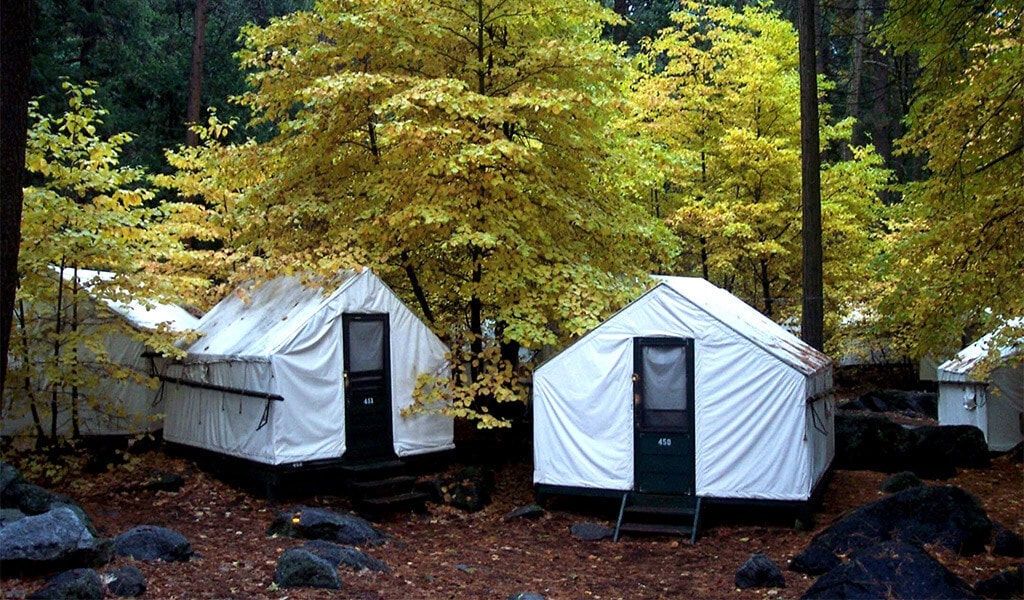
Visiting Yosemite on a budget? No worries: the beauty of “America’s Best Idea” National Park System is that so many of the very best experiences are free with admission. The standard Yosemite entry pass is $35 per vehicle, valid for seven consecutive days. Annual passes and lifetime senior discounts extend the value even greater. Check out our Yosemite on a Budget article on best deals for lodging, experiences, transportation, and food to elevate your vacation value.
Bonus: Yosemite Vacation Planner
With just a little planning and preparation, you can make the most of your time and create indelible Yosemite memories! The Yosemite Vacation Planner will get you started with our exclusive insider tips and ideas on things to do in Yosemite Mariposa County. Download the guide to your digital device to keep it handy throughout your visit.

